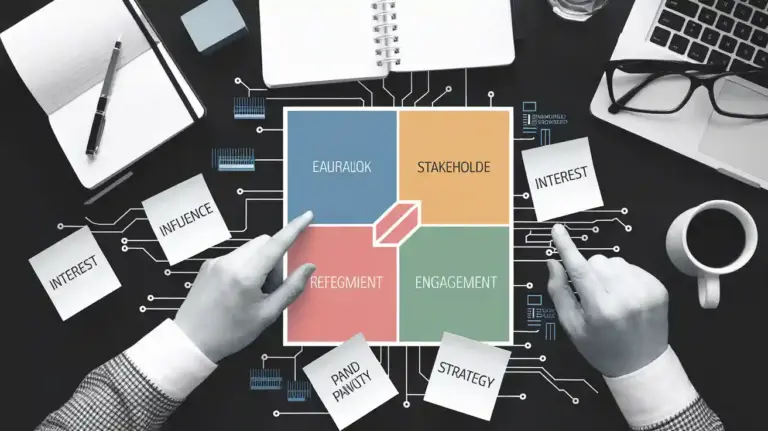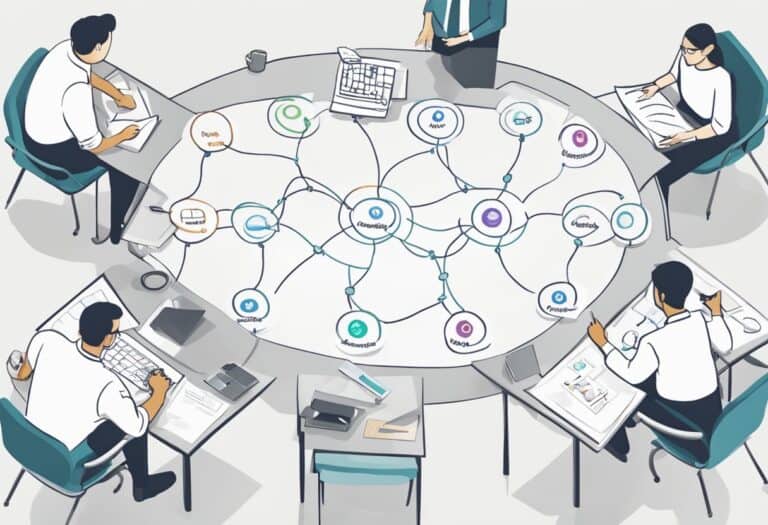Are you looking for the best tools to help you manage change effectively in your organization? Look no further! In this article, we’ve compiled a list of the top change management tools that you need to know.
These tools will help you communicate and collaborate with your team, manage projects efficiently, track metrics, engage employees, and manage knowledge effectively.
Change management can be a challenging process, but with the right tools, you can make it easier and more effective. Whether you’re dealing with a major organizational change or a small shift in your team’s processes, these tools will help you stay on top of things and ensure a smooth transition.
So, let’s dive in and explore the top change management tools that every organization should have in their toolkit.
Communication and Collaboration Tools
You’ll find awesome ways to work together and exchange ideas in this section. Communication and collaboration tools are essential in today’s fast-paced work environment.
Virtual meetings have become increasingly popular as more people work remotely. With these tools, you can easily connect with your team members from anywhere in the world. You can share your screen, present your ideas, and collaborate in real-time.
Internal communication is also critical in managing change effectively. With the right tools, you can keep your team members informed and up-to-date with the latest changes.
Instant messaging platforms like Slack and Microsoft Teams allow you to send quick messages and updates to your team members. You can also create channels for specific projects to keep everyone in the loop.
Email is another tool that can help you communicate effectively. You can use it to share important documents, send updates, and provide feedback.
To ensure effective collaboration and communication, it’s essential to choose the right tools. There are many options available in the market, and it can be overwhelming to choose the right one.
Before selecting a tool, consider your team’s needs and preferences. You can also try out different tools and see which one works best for your team.
With the right communication and collaboration tools, you can manage change effectively and ensure that everyone is on the same page.
Project Management Software
If you’re looking to streamline your team’s workflow and keep everyone on the same page, project management software might just be the ticket. With the rise of Agile methodologies, project management software has become an essential tool for businesses of all sizes.
These tools allow teams to break down projects into smaller, more manageable tasks, assign them to team members, and track progress in real-time. One of the key benefits of project management software is resource allocation. With these tools, you can easily see who is working on what, how much time they are spending on each task, and whether they are on track to meet their deadlines.
This allows you to make informed decisions about how to allocate resources and ensure that everyone is working efficiently. Overall, project management software is an essential tool for any business looking to improve their workflow and increase productivity.
By breaking down projects into smaller tasks, assigning them to team members, and tracking progress in real-time, you can ensure that everyone is on the same page and working towards the same goals. So if you haven’t already, it’s time to start exploring the world of project management software and find the tool that’s right for your team.
Metrics Tracking and Analysis Tools
The importance of tracking and analyzing metrics can’t be overstated, and utilizing the right tools can make all the difference in optimizing your business operations.
Change impact and risk assessment are two key areas that require constant attention and monitoring, especially in a constantly evolving business environment.
To ensure that you are on top of these critical areas, it’s essential to have access to the right metrics tracking and analysis tools.
One such tool is Power BI, a business analytics service by Microsoft that provides interactive visualizations and business intelligence capabilities. With Power BI, you can track and analyze data from multiple sources, including Excel spreadsheets, cloud services, and on-premises data sources.
You can also create custom dashboards and reports, which can help you gain insights into your business operations and make data-driven decisions.
Another useful tool is Tableau, a data visualization software that helps you see and understand your data. Tableau allows you to connect to multiple data sources and create interactive dashboards and reports, which can help you identify trends, patterns, and outliers.
With Tableau, you can also perform ad-hoc analysis and share your insights with others through the cloud or on-premises deployment options.
All in all, using the right metrics tracking and analysis tools can help you stay ahead of the competition and adapt to changes in the business environment.
Employee Engagement Platforms
Get ready to dive into some exciting employee engagement platforms that’ll have your team feeling like a tight-knit group of athletes passing the baton towards a common goal. Employee engagement platforms are designed to boost employee morale and productivity by providing a fun and interactive environment that encourages teamwork, communication, and collaboration. These platforms leverage gamification strategies and feedback mechanisms to create a culture of continuous improvement and growth.
Gamification strategies are one of the key features of employee engagement platforms. By introducing elements of competition, rewards, and recognition, these platforms motivate employees to strive for excellence and go above and beyond their regular duties. Examples of gamification strategies include leaderboards, badges, points, and challenges. By tracking progress and providing real-time feedback, these strategies create a sense of accomplishment and satisfaction that can improve employee engagement and retention.
Feedback mechanisms are another important component of employee engagement platforms. These mechanisms allow employees to share their thoughts, ideas, and feedback with their colleagues and managers. By providing a safe and open forum for communication, these platforms foster a culture of transparency, trust, and collaboration. Examples of feedback mechanisms include surveys, polls, suggestion boxes, and forums. By collecting and analyzing feedback, these mechanisms can help organizations identify areas for improvement and implement changes that enhance employee satisfaction and performance.
Knowledge Management Systems
We’re about to explore an exciting tool that will revolutionize the way your team shares and retains knowledge – brace yourself for Knowledge Management Systems! These platforms are designed to help organizations capture, store, and share knowledge among their employees.
By providing a centralized location for information, these systems improve productivity, reduce errors, and enhance collaboration. However, implementing a Knowledge Management System can come with its own set of challenges.
One of the main benefits of using a Knowledge Management System is that it ensures that employees have access to the information they need to do their jobs effectively. This is particularly important in industries where knowledge is constantly evolving, such as technology or healthcare. Additionally, these systems can help organizations identify gaps in knowledge and training, allowing them to develop targeted programs to address these issues.
On the other hand, implementing a Knowledge Management System can be challenging, especially when it comes to getting employees to use the platform. It’s important to provide adequate training and support to ensure that employees understand the benefits of the system and how to use it effectively.
When implementing a Knowledge Management System, it’s important to have a clear strategy in place. This includes identifying the types of information that will be stored in the system, determining who will have access to the information, and establishing guidelines for how the information will be organized and maintained.
It’s also important to involve employees in the process, as they will ultimately be the ones using the system. By soliciting feedback and input from employees, organizations can ensure that the system meets their needs and is easy to use.
With the right implementation strategy in place, a Knowledge Management System can be a powerful tool for improving productivity and collaboration within an organization.
Which Change Management Tools Are Compatible with the Recommended Software?
When choosing the right change management software, it’s important to consider compatibility with recommended tools. Some popular options include Prosci’s Change Management Toolkit, ChangeGear, and Jira. These tools integrate seamlessly with various software, making the transition process smoother for organizations.
Conclusion
Congratulations! You’ve just learned about the top change management tools that can help you navigate the complexities of organizational change.
With these powerful tools at your disposal, you can streamline your communication, track your progress, and keep your team engaged and motivated throughout the change process.
One interesting statistic to note is that, according to a recent study, only 30% of change initiatives are successful. This means that the majority of organizations struggle to implement change effectively, leading to wasted resources, lost productivity, and decreased morale.
However, by using the right change management tools, you can significantly increase your chances of success and ensure that your change efforts are well-planned, well-executed, and well-received by your team.
In conclusion, the top change management tools that you need to know include communication and collaboration tools, project management software, metrics tracking and analysis tools, employee engagement platforms, and knowledge management systems.
By leveraging these tools effectively, you can overcome the challenges of change management and achieve your goals with confidence and ease. So why wait? Start exploring these tools today and take your change management efforts to the next level!





